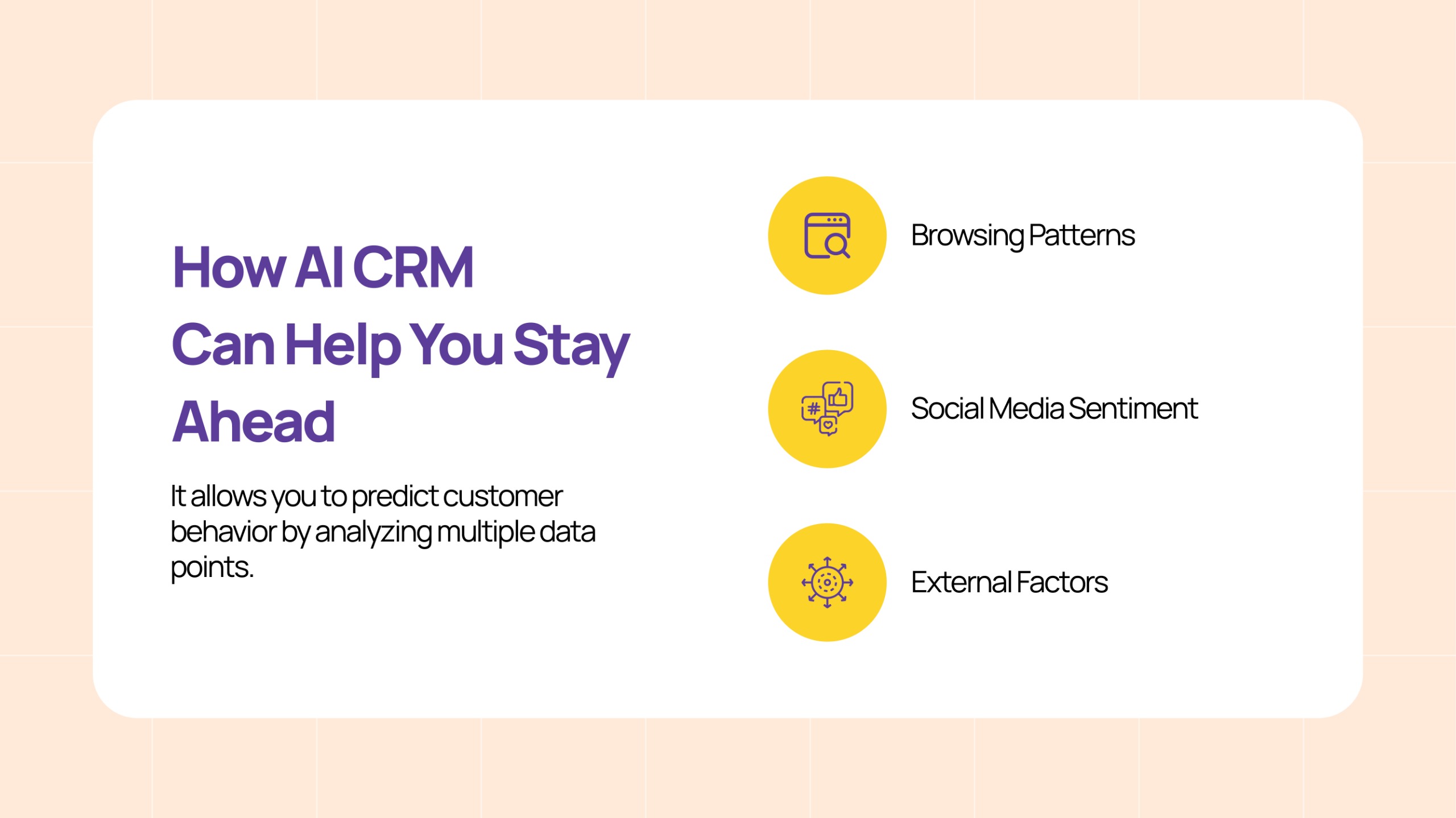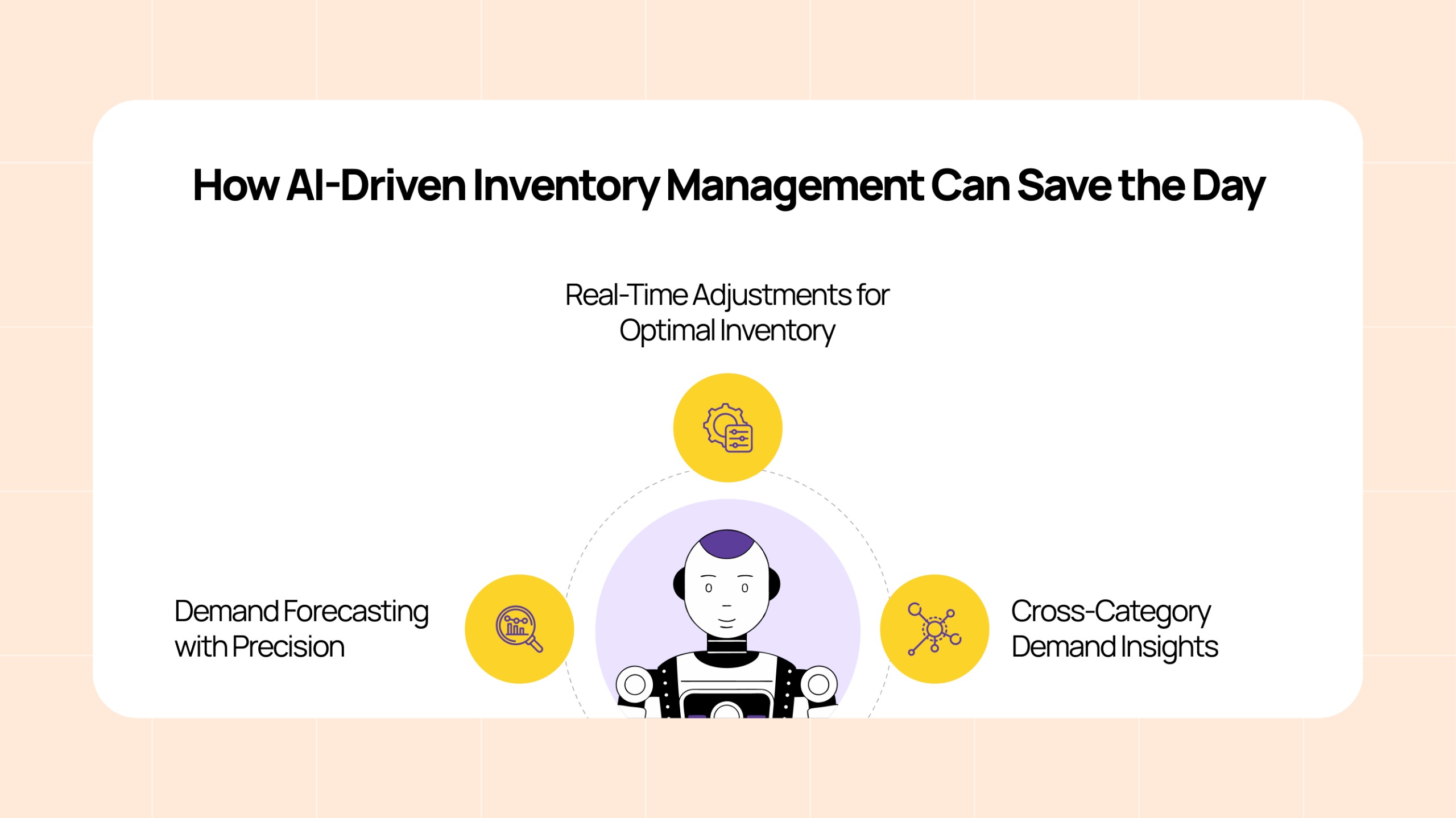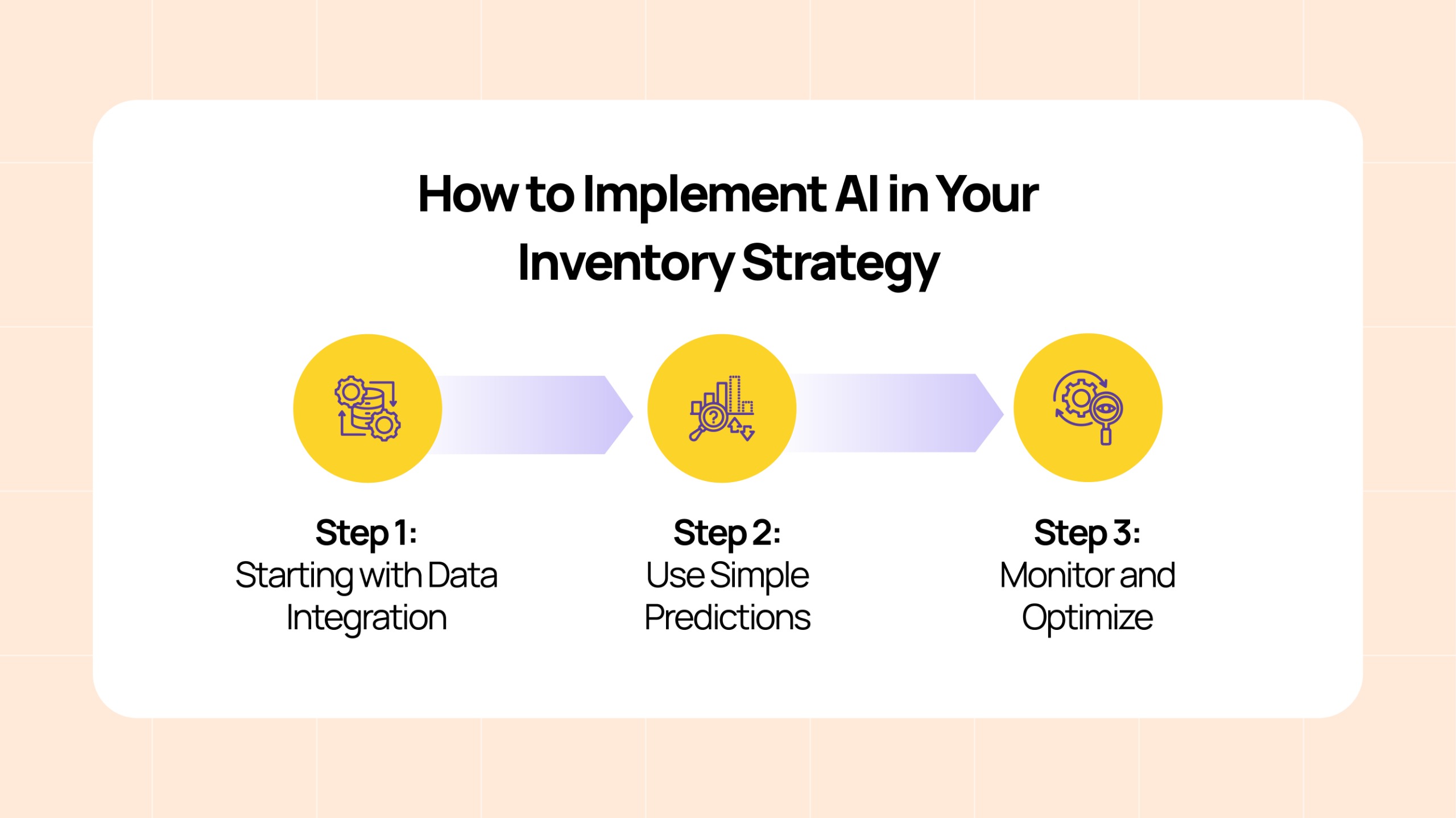
Picture this: It’s three weeks before Diwali, and you’re staring at last year’s sales reports, wondering why, despite the festivities, your numbers didn’t quite hit the mark. Sound familiar? You’re not alone.
According to Financial Express, India’s festive e-commerce market reached $14 billion in 2024, with traditional retail struggling to keep pace. But here’s what most retailers don’t realize: companies implementing CRM systems see an average 29% increase in sales (Salesforce), and when AI enters the picture, the transformation becomes even more dramatic.
As someone who’s weathered multiple festive seasons, you know that preparation is everything. In this article, we will explore a practical guide to leveraging AI-powered CRM to finally crack the code on festive sales optimization.
1. Predictive Customer Behavior Analytics
Know your customers before they know themselves.
What’s Failing You?
Every year, many retailers base their festive season strategies on historical sales data. “Last Diwali, saris sold like hotcakes, so let’s make sure we stock up on them again.” Sound familiar? It’s a common approach, but it’s also a risky one.
Why? Because 42% of Diwali shoppers make their purchases just 1-4 weeks before the festival, which means customers’ preferences and buying patterns are changing at a rapid pace. What worked in previous years may no longer apply, yet many retailers continue to use last year’s data to forecast the upcoming season.
How AI CRM Can Help You Stay Ahead
AI-powered CRM systems do not just look at and analyze past purchases. It allows you to predict customer behavior by analyzing multiple data points:

- Browsing Patterns: AI has the ability to track which products customers are browsing through and for how long. This data helps you in recognizing patterns where you can predict what items they’ll buy next and when.
- Social Media Sentiment: AI can analyze trends and buzz on social media platforms, which will help you understand what products are gaining traction among your audience. Whether it’s specific colors, designs, or themes, AI helps you align your product offerings with the latest customer interests.
- External Factors: Weather, local events, and economic shifts can also influence the buying behavior of your target audience. AI analyzes these patterns and can predict how weather conditions or a shift in economic sentiment might change consumer spending habits.
How You Can Implement Predictive AI in Your Store
- For Fashion Retailers: Fashion retailers can start by tracking customers who viewed ethnic wear but didn’t purchase. With the identification of these patterns, they can target those who are likely to purchase specific items, like jewelry or accessories, based on their previous interactions.
- For F&B Businesses: AI can also help in catering needs by analyzing past orders for F&B businesses. Thus, if you run a bakery or a catering service, this technology can help forecast demand for festive treats and desserts.
Therefore, AI-driven predictive analytics can improve your inventory turnover by 25-30% during festive seasons (McKinsey). Instead of being left with excess inventory in November, AI helps you predict demand more accurately and stock the right products at the right time.
2. Hyper-Personalization of Marketing Campaigns
Personalization is a necessity in modern marketing, especially during the festive season. As customers increasingly expect tailored experiences, it’s no longer enough to send generic promotions or rely solely on past sales data. In a crowded market, AI-powered CRM systems enable you to create highly targeted campaigns that speak directly to each customer’s unique preferences, behaviors, and needs. The result? Higher engagement, more conversions, and ultimately, a significant boost in sales.
Why does personalization matter during the festive season?
During the holiday season, the shopping experience is about making the right decisions at the right time. When consumers are spending more, they want to feel valued. AI-driven personalization gives you the ability to predict what your customers want before they even realize it.
Personalization also significantly boosts customer loyalty. 76% of consumers say that personalized service increases their likelihood of staying with a brand (McKinsey).
The festive period is a prime opportunity for retailers to harness the power of AI to craft personalized experiences that not only boost engagement but also increase sales. This goes beyond sending a “Dear Valued Customer” email; it’s about creating meaningful touch points across every stage of the customer journey.
How AI Enhances Personalization in CRM
AI takes personalization to the next level by allowing brands to move from reactive to predictive marketing. Here’s how AI can fine-tune your campaigns:

- Customer Segmentation with Precision
Instead of relying on broad categories like “age” or “location,” AI helps create hyper-targeted customer segments by analyzing more granular data points like:
- Past Purchase Behavior: AI looks at what a customer has bought before and predicts what they might want to buy next. This allows businesses to send personalized product suggestions like, “You loved our summer collection, now discover our exclusive festive range.”
- Behavioral Insights: How often does a customer browse or interact with your brand? AI can track this and flag customers who are most likely to engage during peak periods like Diwali.
- Social Media Activity: AI tools analyze social sentiment, gauging which products are being talked about on platforms like Instagram or Facebook. For example, if a particular festive accessory is trending, AI can suggest that product to customers who’ve shown an interest in similar styles.
- Dynamic Content & Product Recommendations
AI doesn’t just predict what a customer might want, instead, it tailors the content that’s delivered. Rather than static emails or advertisements, dynamic content evolves in real time based on each customer’s unique data.
- Example 1: A customer who browsed ethnic wear for women last year might receive personalized recommendations for new arrivals or a bundled offer with matching accessories.
- Example 2: If a customer frequently buys eco-friendly products, AI can push a personalized festive collection that highlights sustainable festive wear, thus making the offer more relevant.
- Predictive Marketing for Smarter Campaigns
AI can also predict when a customer will be in the buying mood. Depending upon past behavior, AI can forecast when a customer is likely to purchase. For instance:
- Example: Customers who buy ethnic wear in September may be more inclined to buy jewelry as Diwali approaches. By predicting this buying behavior, you can send personalized offers at the right time.
- Actionable Strategies
So, how can you make this work for your business? Here’s a roadmap for using AI-powered CRM to run successful, hyper-personalized marketing campaigns:
- Implement AI-Driven Product Recommendation
Action: Use AI to suggest complementary products depending on historical transactions.
Why It Works: Personalized product recommendations have been shown to increase the conversion rate by up to 30%, depending on how well they are tailored (Glance).
- Creating Personalized Automated Campaigns
Action: Set up automated email and SMS campaigns with tailored product suggestions, offers, and festive greetings. Use dynamic content that adjusts based on customer preferences, purchase behavior, and engagement patterns.
Why It Works: According to MarTech, personalized emails result in 6x higher transaction rates than generic ones.
- Enhancing Loyalty Programs
Action: Businesses can also use AI to power loyalty programs where they can provide personalized rewards to their customers like early access to limited-time items, special discounts based on their spending patterns, or festive gift bundles that resonate with each customer.
Why It Works: According to Forrester, 79% of customers are more likely to stay loyal to brands that have AI-driven loyalty programs.
3. Real-Time Inventory and Demand Optimization
For many retail businesses, managing inventory during the festive season is a tightrope walk. You want to ensure that your most popular items are always in stock, but you don’t want to overstock products that aren’t moving. A traditional inventory management system relies on past sales data and educated guesses. While this can work in the off-season, it falls short during the festive rush, where consumer behavior changes rapidly, and demand can surge without warning.
This is where AI-powered CRM systems take charge. These systems allow you to predict demand and optimize stock levels in real time while also making sure that you never miss out on a sale due to understocking or overstocking.
How AI-Driven Inventory Management Can Save the Day
With AI, inventory management becomes smarter. Here’s how:

- Demand Forecasting with Precision
AI is known to factor in real-time behaviors and external influences. This helps in forecasting what products will sell best. Let’s say a festival-themed accessory is suddenly trending on social media. With this insight, your AI-powered CRM will pick up on that and recommend that you increase the inventory of that product to meet the coming demand.
Thus, the feature of dynamic forecasting allows you to restock items proactively, rather than waiting until your shelves are empty. The result is fewer missed sales opportunities and reduced overstocking.
- Real-Time Adjustments for Optimal Inventory
One of the biggest advantages of AI is its ability to make real-time adjustments to stock levels. When your CRM detects that an item is selling faster than anticipated, it can automatically alert you to reorder stock from your suppliers or adjust your marketing efforts to keep the buzz alive. Similarly, if sales of a particular item slow down, it can recommend promotions or discounts to clear out that inventory, reducing the need for heavy markdowns at the end of the season.
This is dynamic inventory optimization in action, where your CRM continuously updates your stock levels to match the pace of demand, thus, making sure that your store is always aligned with customer needs.
- Cross-Category Demand Insights
AI-powered CRM doesn’t just predict demand for individual products, but it also offers cross-category insights. To explain this, let’s consider an example: if a customer buys a festive sari, they might also be interested in matching jewelry, footwear, or home decor for their festive celebrations. AI can identify these patterns and help you stock up on complementary items that are likely to be purchased together.
Moreover, cross-category insights can guide your bundling strategy, where you can create targeted product bundles (e.g., sari + jewelry sets) that customers will find irresistible. This not only helps you move more inventory but also increases the average transaction value.
How to Implement AI in Your Inventory Strategy
While adopting AI for inventory optimization might seem daunting, the reality is that it can be implemented in phases, starting with the basics:

- Starting with Data Integration: To incorporate AI in your inventory strategy, you need to start by integrating your POS system with your CRM. It allows AI to access customer data and purchasing patterns to make informed predictions about future demand.
- Use Simple Predictions: Initially, focus on predicting bestsellers and slow-movers. AI can help you identify these items early, so you can manage stock accordingly.
- Monitor and Optimize: Once you start collecting data and seeing AI-driven results, you can then fine-tune your model based on the actual sales and demand you experience. The more data your AI system collects, the better it becomes at forecasting.
Conclusion
You’ve seen the numbers, heard the examples, and probably thought “This sounds good, but…” Let me address that “but.” The retail landscape has fundamentally changed. With festive e-commerce reaching $14 billion and growing 12% year-on-year (IBEF), traditional retailers face a simple choice: evolve or become irrelevant.
AI in CRM isn’t about replacing your experience, it’s about amplifying it. You still know your customers, understand your market, and have the relationships that matter. AI just helps you do it better, faster, and more profitably.
The next festive season is your opportunity to leapfrog competitors who are still operating the same way they did five years ago. The question isn’t whether you can afford to implement AI CRM, it’s whether you can afford not to.
FAQs
- How can AI in CRM help optimize my store’s festive sales?
AI in CRM enables predictive analytics, helping you understand and forecast customer behavior, track trends, and personalize marketing efforts. This leads to smarter campaigns, optimized inventory, and increased customer loyalty during the festive season.
2. What is predictive customer behavior analytics and how does it work for festive sales?
Predictive analytics in AI CRM tracks customer browsing patterns, social media sentiment, and external factors like weather to forecast what products will be in demand. It helps you stay ahead of changing preferences and ensures you stock the right products at the right time.
3. How does AI-powered CRM improve marketing personalization during the festive season?
AI enables hyper-personalized marketing by segmenting customers based on behavior, past purchases, and social activity. With AI, retailers can create targeted campaigns that resonate with individual customer preferences, improving engagement and boosting sales.
4. How can AI optimize my inventory and demand during the festive rush?
AI-powered CRM systems help forecast product demand in real time, enabling dynamic adjustments to stock levels. It ensures that popular items are restocked quickly while preventing overstocking, improving sales opportunities and reducing markdowns.
